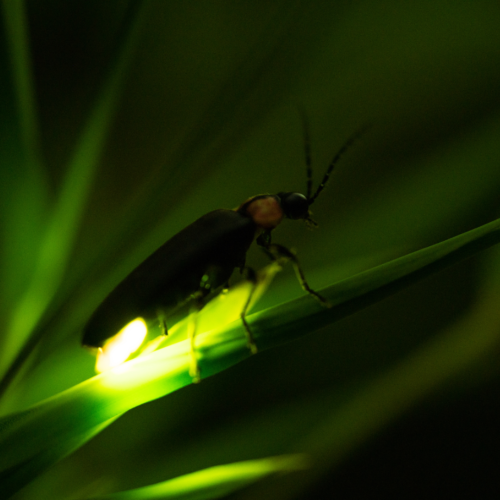Published June 24, 2024
Firefly populations are dwindling. Here’s how you can help
Fireworks start this week, but nature has its own way of lighting up the night sky. If you’ve been outdoors during the evening in the last few weeks, you may have noticed fireflies are out.
A hallmark of summer, fireflies or “lightning bugs” are soft-bodied beetles that are bioluminescent, another word for a living organism that emits light.
Those who have spent many summer evenings outside may have noticed that there aren’t quite as many fireflies as there once were. Indeed, firefly species are dwindling due to many factors, including use of pesticides and habitat loss. Learn more about one of nature’s coolest glowing creatures and how you can help protect their homes:

- Buckeye fireflies: There are about two dozen firefly species in Ohio. The common eastern firefly is what you will most likely find in your yard. Each species has a slightly different flight path: some loop up, some fly straight lines and some differ the times of their glow. Fireflies at different heights with a slightly different pattern of flash movements may indicate different species.
- Who glows: Both male and female fireflies can glow, but females often wait for their species-specific male flash flying pattern before glowing up to attract a mate. Some firefly larvae also glow.
- Habitat and food: Most firefly species thrive as larvae in rotting wood near water sources. If you are looking for fireflies in a park, head to wooded areas near water to see how many fireflies you can spot. When it comes to food, most fireflies don’t eat, rather they focus energy on finding a mate.
- Cool facts: Bioluminescence is of interest to many scientists. In fact, chemicals found in fireflies, luciferin and luciferase, are being studied with the goal to develop synthetic versions to help better understand and detect cancer.
- Another “cool” fact: Fireflies produce “cold light,” meaning their glow doesn’t produce any heat. Because fireflies don’t give off heat like a lightbulb would, they are the most efficient light producers.
- How you can help: Scientists fear fireflies may face extinction due to habitat loss, pesticides and artificial light, as this light disrupts natural biorhythms and mating rituals. According to firefly.org, a good way to help protect fireflies is just to be a little lazy with your yard:
- Opt out of using chemicals, such as pesticides, on your lawn.
- Have woody yard waste like twigs, branches and leaves? Consider leaving it in your yard. Designating a space in your yard to leave natural yard waste can help many insects and wildlife. Take the extra step of adding a small moving water feature into your yard, as fireflies like wet habitats.
- Plant native trees, a great home for fireflies and beneficial to other wildlife, as well.
- Turn off outside lights at night.





